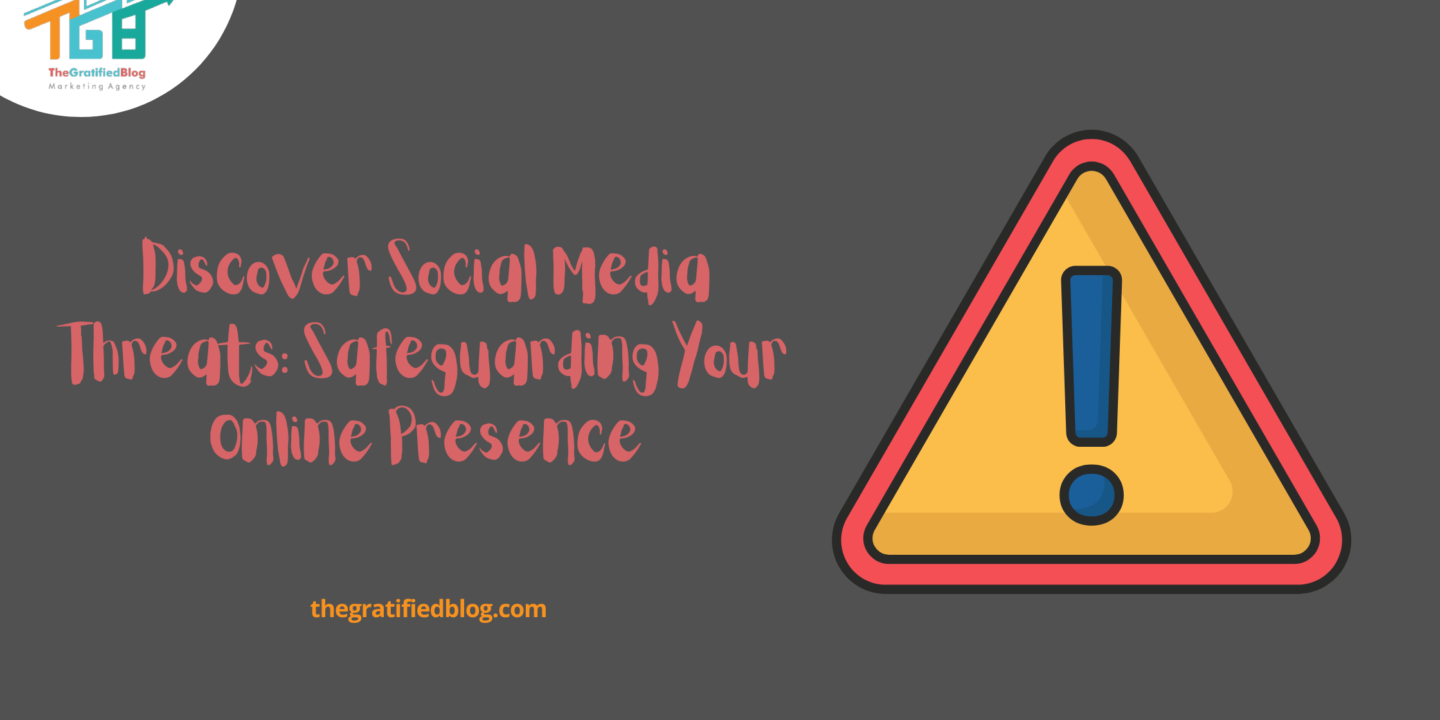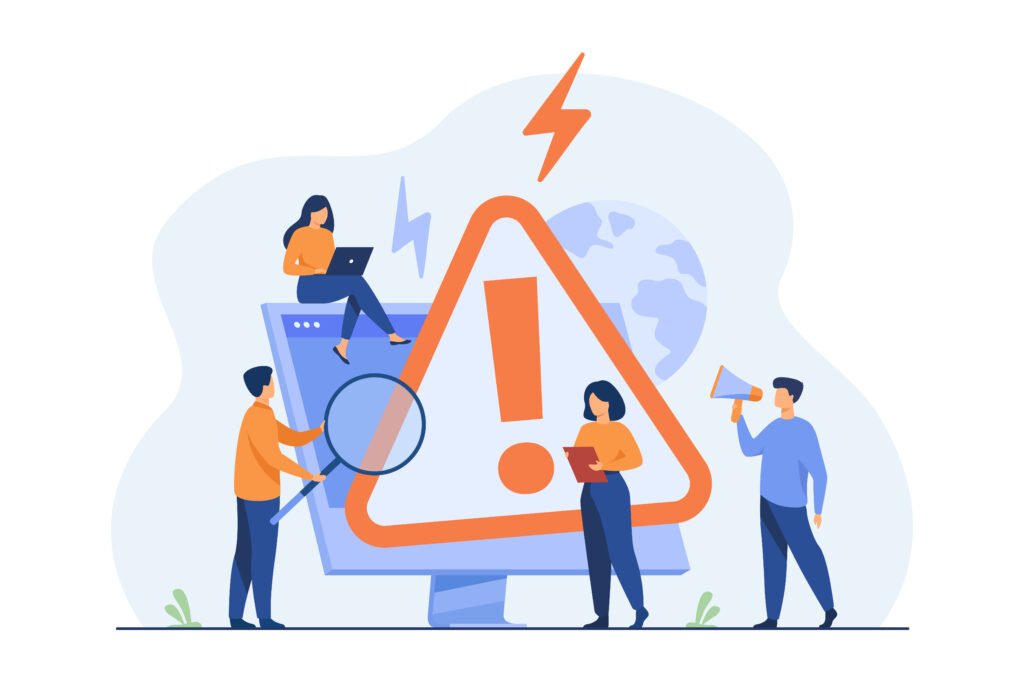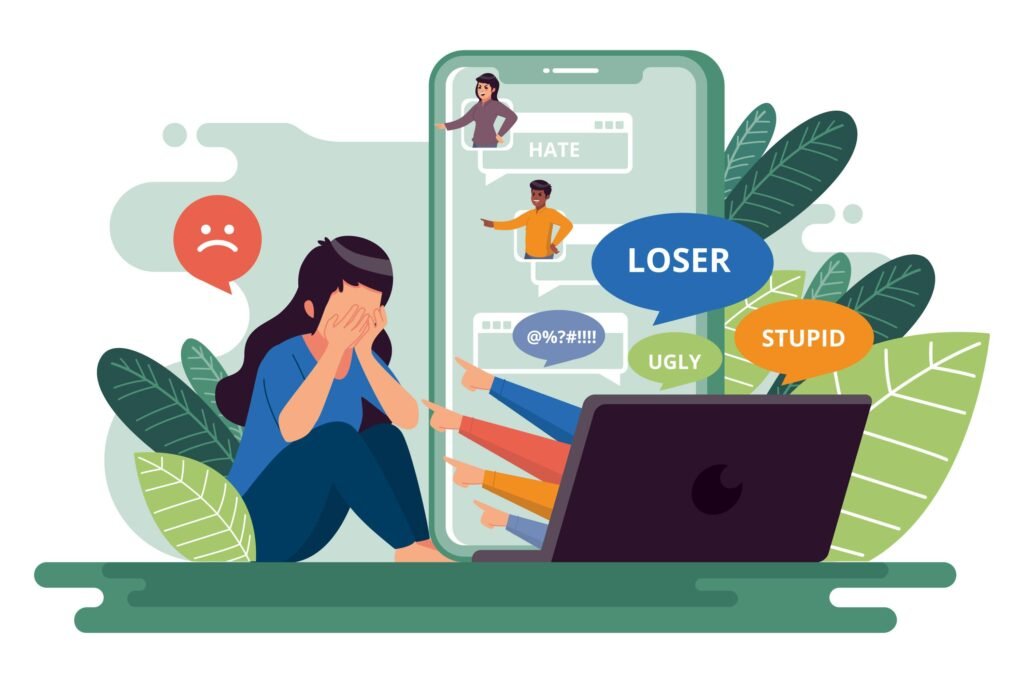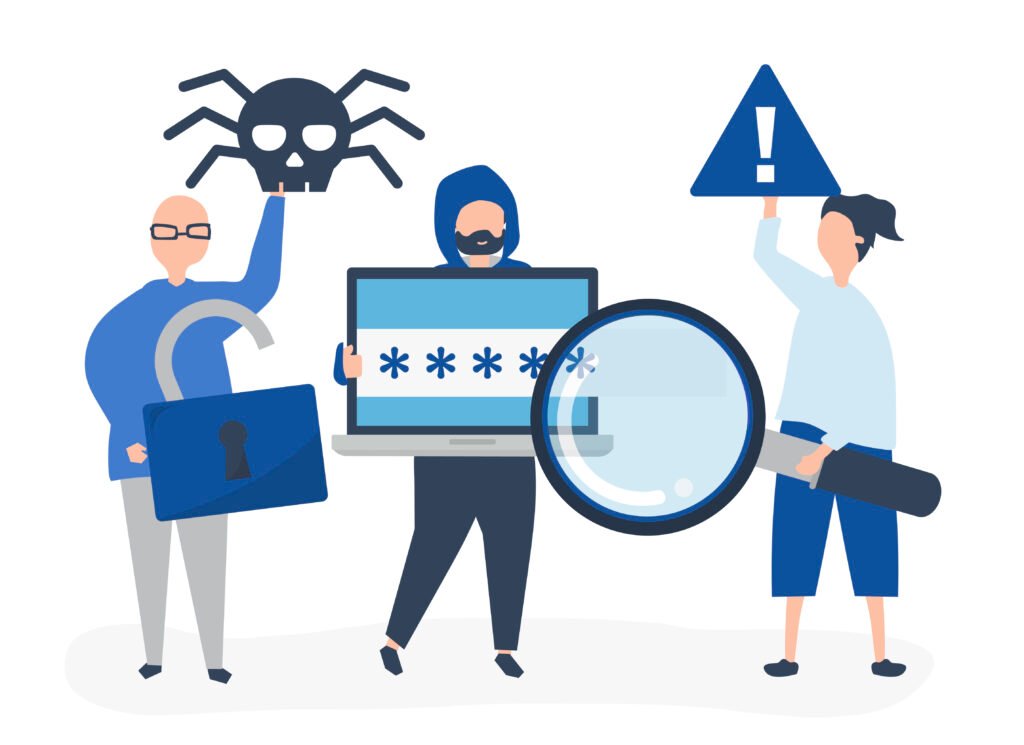
In today’s digital age, the phrase “social media threats” has become increasingly prevalent, reflecting the multifaceted risks that individuals, businesses, and society at considerable encounter in online spaces.
From cyberbullying and identity theft to the spread of misinformation and online predators, the landscape of social media presents a myriad of challenges that can impact users’ well-being, privacy, and security. Understanding these threats is paramount in safeguarding oneself and navigating the digital world effectively.
In this comprehensive blog, we delve into the various dimensions of social media threats, examining their origins, implications, and strategies for mitigation. Whether you’re an experienced user of social media platforms or just starting or beginning to explore online platforms, arming yourself with knowledge about these threats is essential for fostering a safer and more responsible online community.
So, let’s uncover the complexities of social media threats and empower ourselves to mitigate their impact.
What Are Social Media Threats?
Social media threats are risks or dangers from social media platforms such as Facebook, Twitter, or Instagram.
These threats can include things like cyberbullying, where people are harassed online. Identity theft occurs when an individual unlawfully appropriates your personal information, and scams are where people try to trick you into giving them money or sensitive information. Overall, social media threats are things that can harm you or cause problems when you’re using social media.
Importance Of Understanding Social Media Threats
Understanding social media threats is crucial for several reasons:
- Protection and Security: By recognising the potential risks associated with social media, individuals can take proactive measures to safeguard themselves and their personal information from cyber threats. This awareness enables users to adopt better privacy settings, identify and avoid scams, and control their online presence.
- Mitigation of Harm: Knowledge about social media threats allows individuals and communities to mitigate the harmful effects of cyberbullying, identity theft, and other malicious activities. Through education and awareness campaigns, users can learn to recognise warning signs and intervene effectively to prevent further harm.
- Preservation of Trust: Social media platforms serve as vital channels for communication, networking, and information sharing. However, the prevalence of threats such as misinformation and fake news undermines trust in these platforms and erodes the credibility of online content. Understanding social media threats helps users discern the digital landscape, fostering a more trustworthy online environment.
- Promotion of Responsible Usage: By educating users about the potential pitfalls of social media, organisations and educators can promote responsible digital citizenship. Encouraging critical thinking, empathy, and respect for others’ privacy fosters a culture of responsible online behaviour, reducing the prevalence of cyberbullying and other harmful activities.
Now that we’ve covered social media threats and why it’s essential to understand them, let’s briefly discuss the different categories of social media threats.
Types Of Social Media Threats

- Cyberbullying
- Identity Theft and Fraud
- Privacy Concerns
- Phishing and Scams
- Spread of Misinformation and Fake News
- Online Predators and Grooming
- Mental Health Impacts
Now, let’s delve into these threats to grasp the full scope of their implications and characteristics.
Cyberbullying

Cyberbullying involves utilizing electronic communication to harass or intimidate others harass, intimidate, or harm others, often repeatedly and intentionally, through platforms such as social media, messaging apps, or online forums.
Impact of Cyberbullying:
- Psychological Effects: Cyberbullying can lead to increased levels of stress, anxiety, and depression among victims.
- Social Isolation: Victims might retreat from social interactions and experience loneliness and alienation.
- Academic Decline: Cyberbullying can negatively impact academic performance, leading to absenteeism, decreased concentration, and lower grades.
- Long-Term Consequences: Victims of cyberbullying may suffer long-term emotional scars, affecting their self-esteem and overall well-being.
Identity Theft and Fraud
Identity theft involves the unauthorised use of someone else’s personal information, such as name, date of birth, or financial details, to impersonate or defraud others for malicious purposes.
Common Tactics Used by Cybercriminals
- Phishing: Cybercriminals use deceptive emails, messages, or fake Websites designed to deceive users into disclosing sensitive information like passwords or credit card numbers.
- Fake Profiles: Cybercriminals impersonate individuals or organisations to gain trust and access personal information by creating fraudulent profiles.
- Data Breaches: Hackers exploit security vulnerabilities in social media platforms to access databases containing users’ data for illicit purposes.
- Social Engineering: Manipulative tactics are employed to gain victims’ trust and coax them into sharing personal information, such as posing as a friend or authority figure.
Privacy Concerns

Social media usage poses significant privacy risks, as personal information shared online can be accessed by third parties without users’ consent, leading to potential exploitation, surveillance, or misuse of data.
Examples of Privacy Breaches and Consequences:
- Unauthorised Data Sharing: Social media platforms may inadvertently or intentionally share users’ personal information with advertisers or third-party apps, compromising privacy and leading to targeted advertisements or identity theft.
- Data Breaches: Hackers may exploit vulnerabilities in social media platforms’ security systems to gain unauthorised access to users’ sensitive data, resulting in exposure to personal information, financial loss, and reputational damage.
- Location Tracking: Some social media apps collect and track users’ location data, raising concerns about surveillance, stalking, or targeted marketing based on location history without users’ explicit consent.
- Privacy Policy Changes: Changes in social media platforms’ privacy policies or terms of service may result in increased data collection or sharing practices, eroding users’ privacy rights and raising ethical concerns about consent and transparency.
Phishing and Scams
Phishing attacks and scams on social media involve deceptive tactics, such as fraudulent emails or messages, crafted to deceive users into sharing sensitive information or clicking on harmful links, leading to identity theft, financial loss or malware infection.
Guidance on Recognizing and Avoiding Phishing Attacks and Scams:
- Be Skeptical: Be cautious when receiving messages you did not expect or emails requesting personal information, especially from unknown sources.
- Verify Sender Information: Check the sender’s email address or profile to ensure it matches legitimate sources before responding or clicking on links.
- Avoid Clicking Suspicious Links: Refrain from clicking on links embedded in emails or messages if they seem suspicious or redirect to unfamiliar websites.
- Secure Accounts: Implement strong passwords, enable two-factor authentication, and regularly update security settings to protect against unauthorised access and phishing attempts.
Spread of Misinformation and Fake News
Misinformation and fake news disseminated on social media platforms can manipulate public opinion, erode trust in credible sources, and exacerbate social divisions, leading to confusion, polarisation, and mistrust.
Factors Contributing to the Spread of Misinformation:
- Viral Nature of Social Media: The rapid dissemination of information on social media platforms facilitates the spread of misinformation, as sensationalised or misleading content can quickly go viral without proper fact-checking.
- Echo Chambers and Confirmation Bias: Users tend to gravitate towards information that aligns with their beliefs, creating echo chambers where misinformation thrives, and confirmation bias reinforces false narratives.
- Lack of Content Regulation: Limited oversight and moderation of content on social media platforms allow misinformation to proliferate unchecked, undermining the credibility of accurate information.
- Algorithmic Bias: Algorithms employed by social media platforms prioritise engagement and user interaction, potentially amplifying sensational or misleading content over factual information.
Online Predators and Grooming
Online predators use manipulative tactics, such as grooming, to exploit vulnerable individuals, particularly children and teenagers, by establishing trust and manipulating them into engaging in harmful behaviours or sharing personal information.
Signs of Online Grooming and Predatory Behavior
- Building Trust: Predators often establish rapport and build trust with potential victims by portraying themselves as sympathetic listeners or offering emotional support.
- Secrecy and Isolation: Predators may encourage victims to keep their interactions secret from family or friends and isolate them from their support networks.
- Flattery and Gifts: Predators use flattery, compliments, and gifts to manipulate victims and lower their inhibitions, making them more susceptible to coercion.
- Sexualised Conversations: Grooming tactics may involve gradually introducing sexualised content or requests, exploiting victims’ curiosity or naivety to engage in inappropriate or harmful behaviour.
Mental Health Impacts
Social media use has been linked to various adverse mental health outcomes, including increased feelings of loneliness, anxiety, depression, and low self-esteem, as users compare themselves to others and experience cyberbullying or online harassment.
Common Mental Health Issues Exacerbated by Social Media Use:
- Social Comparison: Constant exposure to Carefully selected images and lifestyles displayed on social media platforms can result in unrealistic standards and feelings of inadequacy, contributing to poor body image and self-esteem.
- Fear of Missing Out (FOMO): Users may experience anxiety or stress when comparing their lives to the seemingly perfect or exciting experiences shared by others, leading to a fear of missing out on social events or opportunities.
- Cyberbullying and Harassment: Negative interactions, such as cyberbullying, trolling, or harassment, can have detrimental effects on mental health, causing distress, anxiety, and even suicidal ideation among victims.
- Sleep Disturbances: Overuse of social media, incredibly late at night, can disturb sleep patterns and quality, resulting in tiredness, irritability, and reduced cognitive function.
Conclusion
Having learned about the various social media threats, protecting your social media accounts is crucial. Safeguarding your online presence is essential in today’s digital world. By implementing security measures, staying vigilant against potential threats, and practising responsible social media usage, you can reduce the risks and experience a more secure online experience.
Remember, your online safety is in your hands, so take proactive steps to protect yourself and your information while navigating the digital landscape.
If you still have any questions related to the blog, please leave them in the comments section. We will be happy to answer you.
Thanks for reading 🙂








No Comments